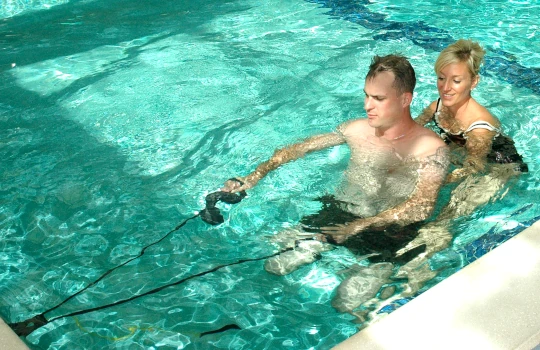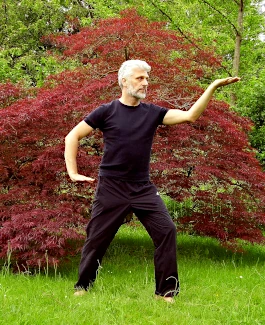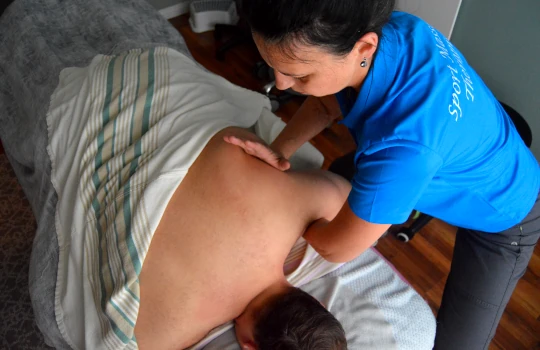Holistic Treatment for Symptoms of Muscular Dystrophy
Wednesday, July 10, 2019, 02:35 PM
Muscular Dystrophy is a neuromuscular disorder that can affect anyone at any stage of life. There are nine types of muscular dystrophy that affect different sets of muscles and cause different degrees of muscle weakness.
The most common and severe type is Duchenne muscular dystrophy, which affects about 1 out of every 3,500 genetically male children. Genetically female children can carry the gene that causes muscular dystrophy, but they rarely show symptoms of the disease. Early onset of muscular dystrophy occurs between the ages of three and five.
Symptoms of muscular dystrophy include progressive wasting of muscles, weakness, fatigue, pain, and loss of function. Common signs of muscular dystrophy include poor balance, frequent falling, difficulty walking, limited range of movement, and drooping eyelids.
Progression of the disease varies from person to person, but as muscles weaken over time it creates physical limitations for the person affected. Some people with muscular dystrophy may lose the ability to perform everyday tasks, feed themselves, walk, climb stairs, or — in extreme cases — breathe on their own.
While there is no cure for the disease, holistic heath practices like aquatic therapy, qigong, and massage therapy can help improve the quality of life for people with muscular dystrophy.
How Aquatic Therapy Can Help Muscular Dystrophy
Some people with muscular dystrophy may not be able to access holistic treatments in a traditional setting due to severe pain or mobility issues. Aquatic therapy is an effective alternative to the conventional delivery of holistic practices.


Aquatic therapy allows holistic practitioners to practise in a water environment. It works by releasing the burden of gravity and reducing the effort required for some application techniques, allowing the practitioner to deliver a more focused treatment.
Aquatic therapy also reduces the motion and stress barriers some clients may have, making it a great alternative to traditional treatment for people with mobility issues and pain. The buoyancy of the water and the decreased effect of gravity allow clients to perform exercises and stretches that would not be possible on land.
Research has shown that aquatic therapy improves functional mobility in patients with muscular dystrophy by improving balance and coordination, protecting joints, and improving muscle strength and endurance. These benefits support the daily tasks the client performs and benefits their quality of life and overall well-being.
How Qigong Can Help Muscular Dystrophy
Qigong is a centuries-old practice, dating back over 3,000 years. It is often referred to as movement meditation and consists of a series of defined postures that are linked together with slow, flowing movements.

Qigong focuses on physical strength conditioning, flexibility, and resilience. The benefits of qigong include improved cardiovascular, respiratory, circulatory, lymphatic and digestive functions.
It is especially beneficial for people with muscular dystrophy because the movements are low-impact and adaptable to different mobility levels.
Research has shown that Qigong may be useful as an adjunct therapy for people with muscular dystrophy. It has been shown to help maintain mobility and balance and slow the rate of decline in general health in people with muscular dystrophy.
How Massage Therapy Can Help Muscular Dystrophy
Muscular dystrophy causes the degenerating and weakening of muscles and can be very painful. The disease also causes muscles to stiffen and shorten, resulting in decreased range of motion and mobility issues.


Massage therapy can help relieve pain and improve range of motion by relaxing tight or contracted muscles. This improves muscle function and can improve mobility in people with muscular dystrophy.
Progressive muscle relaxation has also been proven to relieve stress and anxiety, improve sleep, and lower blood pressure.
How Thai Massage Can Help Muscular Dystrophy
One of the most recommended ways to ease symptoms of muscular dystrophy is to stretch. Stretching keeps joints flexible and helps maintain the length and elasticity of muscles.
Thai massage in particular is a great way to both stretch the body and relieve muscle tension, making it effective for increasing range of motion and maintaining mobility.

